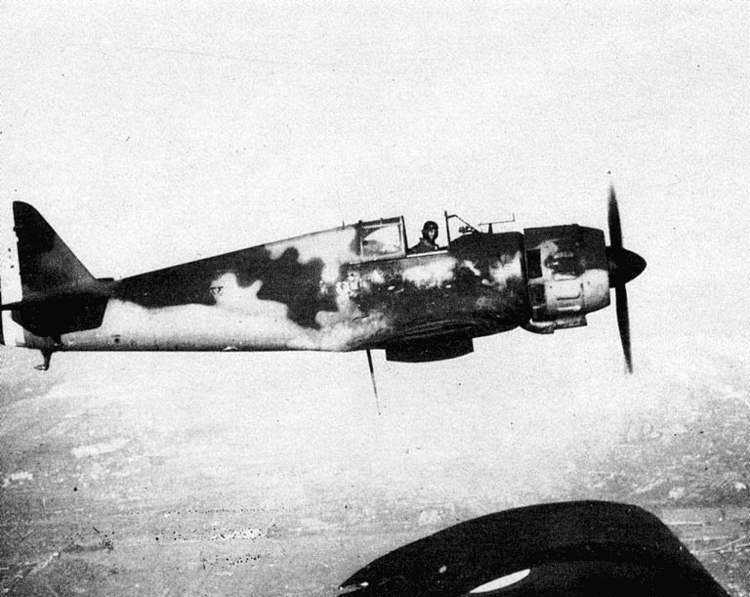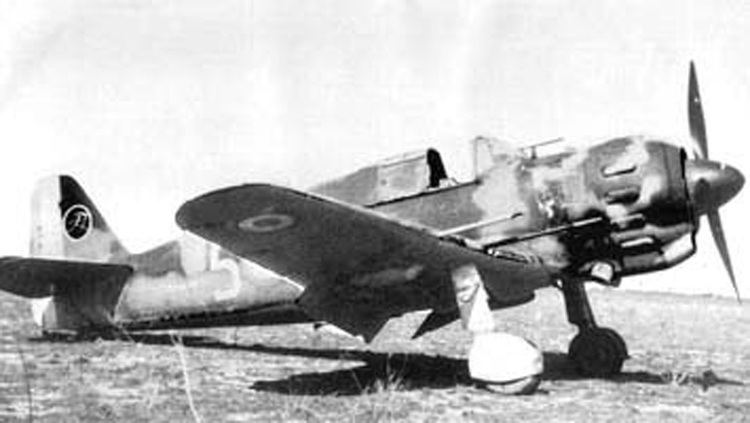Top speed 509 km/h Length 9.1 m | Wingspan 11 m Manufacturer SNCASO | |
 | ||
The Bloch MB.150 (later MB.151 to MB.157) was a French low-wing, all-metal monoplane fighter aircraft with retractable landing gear and enclosed cockpit, developed by Société des Avions Marcel Bloch as a contender in the 1934 French Air Ministry competition for a new fighter design.
Contents

Development
Although the competition was won by the Morane-Saulnier M.S.406 prototype, development proceeded culminating in the first attempted flight of the MB.150.01 prototype in 1936. Unfortunately, the aircraft proved unable to leave the ground. With modifications consisting of a strengthened wing of greater area, revised landing gear and installation of a 701 kW (940 hp) Gnome-Rhone 14N-0 radial engine with a three-blade constant speed propeller, the MB.150 finally flew in October 1937.

Handed over to the Centre d'Essais du Materiel Aerien (CEMA) for service trials, its performance proved sufficiently interesting to warrant further development. This brought, at the very beginning of 1938, a small increase in wing span and installation of a 14N-7 engine. When trials were completed in late spring 1938, SNCASO was awarded an order for a pre-production batch of 25 aircraft.

No production of the MB-150.01 occurred, the aircraft being unsuitable for mass production. Redesign led to the MB.151.01 and MB.152.01 prototypes, developed and produced in parallel. By the outbreak of World War II, some 120 had reached the Armée de l'Air, but few of them were flyable, most missing their gunsights and propellers.
The MB.153 and MB.154 were intended as testbeds for American engines, but only the MB.153 flew, and when it crashed a few days later as damaged beyond repair, pursuit of these alternatives also ceased. Instead, attention shifted to extending the range of the MB.152. This was achieved by moving the cockpit aft in order to make room for a new fuel tank. Other modifications included a slightly broader wing and revised aerodynamics around the cowling. The result, named MB.155 performed favourably in flight tests and was ordered into production in 1940, but only 10 aircraft had been completed by the Fall of France. Under the terms of the armistice, the remaining 25 on the production line were completed and delivered into Vichy service. From there, some eventually made their way into the Luftwaffe after 1942.
The final member of the family, the MB.157 had a far more powerful engine and eventually became a very different aircraft as the design evolved from the MB.152 to accommodate the larger and heavier motor. Unfinished at the time of the armistice, it was ordered to be completed and flown under German supervision. Demonstrating superb performance, it was taken to Orly where the powerplant was removed for testing within a wind tunnel. The excellence in the design was confirmed. It was later destroyed in an Allied air raid.
Operational history
MB.151s and MB.152s equipped nine Groupes de Chasse (fighter groups) during the Battle of France. While they were outmatched by the faster Messerschmitt Bf 109 E, the pilots of Bloch MB.152s destroyed at least 188 enemy aircraft, for the loss of about 86 Blochs. They proved tough aircraft, able to stand considerable battle damage and a good gunnery platform. Their problems included poor agility, unreliable guns, poor range (600 km [370 mi] compared to 660 km for the Bf 109E) and being notably underpowered. Six groupes continued to fly in the Vichy French Air Force until this was disbanded on 1 December 1942, the aircraft being passed over to the Royal Romanian Air Force by the Germans.
Though the Greek government had ordered 25 MB.151s, actually only nine of these were exported to Greece. They flew with the 24th Moira Dioxis (Fighter Squadron) of the Hellenic Royal Air Force in Elefsina against the Italians and Germans, scoring several air-to-air victories until 19 April 1941, when the last MB.151 was shot down. The Bulgarian government was negotiating the acquisition of MB.152 fighters with the Vichy government. In February 1943 a contract for delivery of 20 aircraft was signed, but vetoed by the German authorities, which by now controlled Vichy French politics. Instead, Bulgaria later received a series of Dewoitine D.520.
In 1944, several surviving MB.152s were liberated at an airfield in mid-southern France. After being flight-tested and evaluated, and painting out the Balkenkreuze, and swastikas, they were fitted with more-powerful American engines and went up against the last remnants of the Luftwaffe with the Free French.
Variants
Specifications (MB.152C.1)
Data from Aircraft of the Third Reich;French Fighters of World War Two; French Aircraft from 1939 to 1942
General characteristics
Performance
Armament
